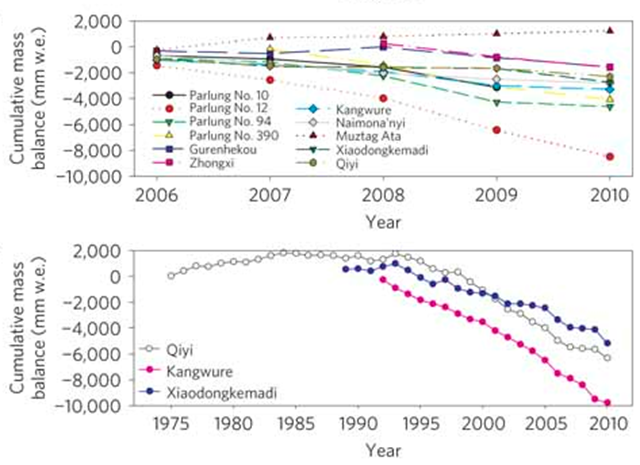Graph of the Day: Cumulative mass balance for Himalaya glaciers, 1975-2010
Above, Cumulative mass balance for 11 glaciers in 2006–2010 (Supplementary Table S6 and Figs S3–S13). Below, Cumulative mass balance for the three longest time series of glacier mass-balance measurements along transect 1 (Supplementary Table S7 and Figs S14 and S15). ABSTRACT: The Tibetan Plateau and surroundings contain the largest number of glaciers outside the polar regions1. These glaciers are at the headwaters of many prominent Asian rivers and are largely experiencing shrinkage2, which affects the water discharge of large rivers such as the Indus3, 4. The resulting potential geohazards5, 6 merit a comprehensive study of glacier status in the Tibetan Plateau and surroundings. Here we report on the glacier status over the past 30 years by investigating the glacial retreat of 82 glaciers, area reduction of 7,090 glaciers and mass-balance change of 15 glaciers. Systematic differences in glacier status are apparent from region to region, with the most intensive shrinkage in the Himalayas (excluding the Karakorum) characterized by the greatest reduction in glacial length and area and the most negative mass balance. The shrinkage generally decreases from the Himalayas to the continental interior and is the least in the eastern Pamir, characterized by the least glacial retreat, area reduction and positive mass balance. In addition to rising temperature, decreased precipitation in the Himalayas and increasing precipitation in the eastern Pamir accompanied by different atmospheric circulation patterns is probably driving these systematic differences.
Different glacier status with atmospheric circulations in Tibetan Plateau and surroundings
